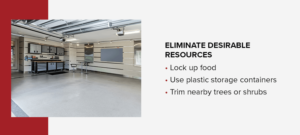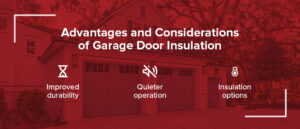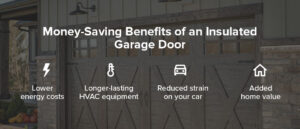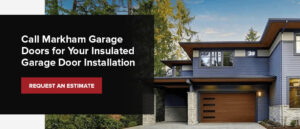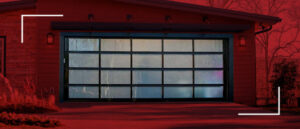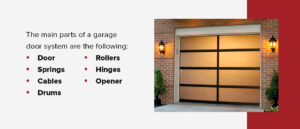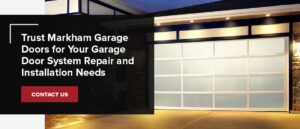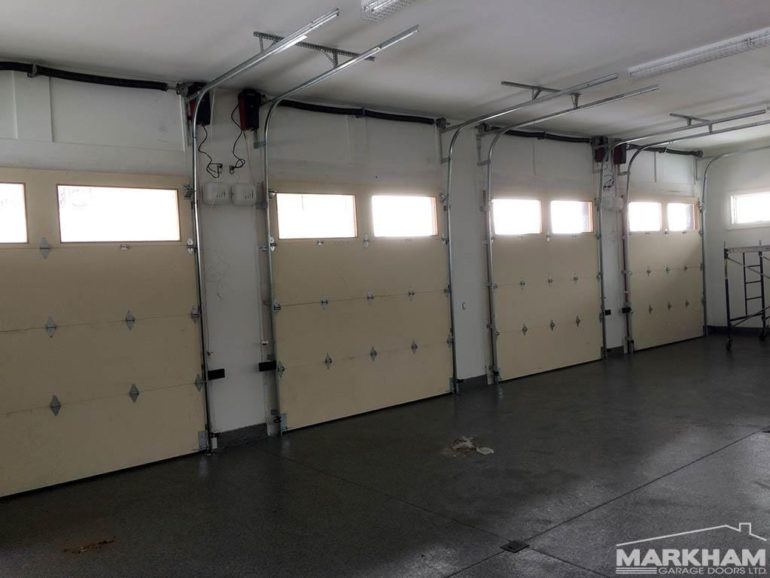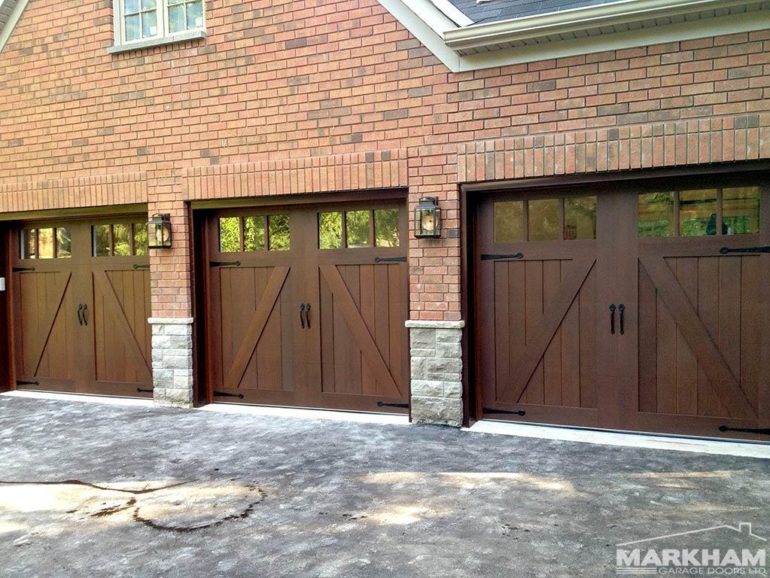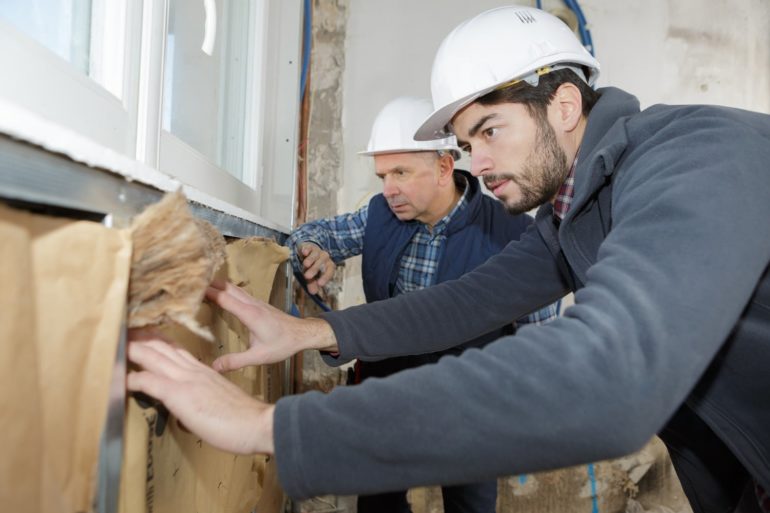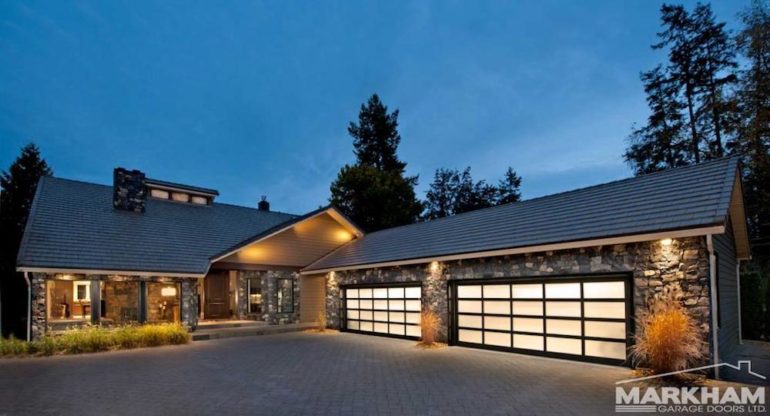How to Keep Rodents Out of Your Garage
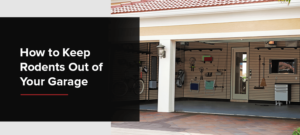
Garages are a tremendous asset for our homes — they keep our vehicles safe, offer storage space and can be used as recreational rooms or workshops. However, since most homeowners will leave items in the garage unattended for long periods, it’s common for pests such as insects and rodents to make themselves at home. Mice, in particular, might see your garage as an excellent source of shelter, food and water.
If not stopped, pests can destroy your belongings and the structural integrity of your garage. Learn the reasons mice or rats might be targeting your home and how to prevent rats in your garage.
Why Mice Choose Garages
According to a 2019 American Housing Survey (AHS), 37% of Americans have seen rodents in their homes, with 39% finding them in their garage. Rodents are among the most dangerous garage pests because they can spread over 35 diseases, chew and burrow into your belongings and seldom arrive alone.
Chances are, you’ve encountered a rodent or insect in your garage at some point. But have you ever wondered why they seem to love garages so much? A few reasons include:
- Garages provide protection: Many homeowners struggle to keep bugs out of their garages and find it difficult to deter rodents from their homes throughout the seasons. This is often because garages protect pests from the warmth of the summer and the frigid cold of the winter. They might also seek your garage to hide from predators or if their outdoor home has been destroyed.
- Garages simulate a pest’s natural environment: Most bugs and mice are drawn to garages because they’re reminiscent of their natural habitats — dark and warm with bountiful materials and debris to burrow and nest in.
- Pests are attracted to smells: Your garage can be a source of tempting smells that may attract rats and insects, such as garbage or plants.
- Garages provide a food source: Mice will eat most grain-based food, such as dog food or bird seed, which is commonly stored in garages.
- Garages offer various hiding places: Mice prefer small, protected spaces that aren’t too damp so they can hide or nest. They may take up residence in storage boxes, walls or car engines.
5 Steps to Keep Rodents Out
Many homeowners struggle with mice infestations, especially when their homes reside next to empty fields, lots or unoccupied buildings. Fortunately, there are several ways to deter mice from your garage and protect your home and belongings.
If you’re struggling with a garage mice infestation or want to be proactive, consider the following precautions:
1. Maintain an Organized Space
Since rodents tend to take residence in your garage when you leave it unattended, it’s an excellent idea to sweep the area every few weeks. By storing items off the ground and staying as organized as possible, you can rid your garage of the dark, tiny places mice love to burrow and nest in. If you use your garage primarily for storage, regularly checking in and keeping the space clean and tidy can prevent mice from using it to hide and nest.
2. Seal Access Holes
Most mice can fit through a hole just a quarter of an inch in diameter. It’s essential to seal any access holes, cracks or crevices in your garage’s ceiling, floor and wall materials to prevent pests from invading your space.
Follow these steps to rat-proof your garage:
- Install weather stripping to prevent entryway through doors and windows.
- Use silicone-based caulk to seal cracks, holes and crevices within your garage walls, windows, doors, foundation and roofing.
- Apply masonry sealer to large openings in stone, concrete or brick.
- Block holes in window screens with a screen repair kit — they’re available at most home supply stores.
- Place vent covers over access points to your plumbing and heating, ventilation and air conditioning (HVAC) system, like dryer vents or duct openings.
3. Eliminate Desirable Resources
One of the most significant ways to deter rodents from your garage is by making the space inhospitable. To eliminate their most desirable resources, you’ll want to:
- Lock up food: Remove food attractions by using covered trash containers and cleaning your cooking grills regularly. If possible, try to keep food waste out of your garage until trash pickup day.
- Use plastic storage containers: Use plastic containers with tight-fitted lids to store decorations, food and other goods rather than cardboard boxes. This way, rats can’t hide or make nests out of the material.
- Trim nearby trees or shrubs: Prevent rodents from getting close to your garage by eliminating nearby hiding spots. Trim any trees or shrubs close to your garage that may provide them cover.
4. Place Traps
If you find potential problem areas or access points, laying traps can help you get rid of mice in your garage and prevent them from returning. Remember to keep children and pets away from your garage if you use toxic or spring-loaded traps. Release rodents at least a mile from your home to keep them from coming back.
A few vulnerable spots to place pesticides, sprays or traps can include:
- Interior and exterior walls
- Windows
- Doors
- Roof eaves
5. Fortify Your Garage Door
While many rodent infestations occur through cracks or crevices, other mice simply enter through the garage door. To ensure your garage isn’t vulnerable to rodents, follow these necessary steps to fortify it:
- Apply weatherstrip: Many mice might chew through the weatherstripping to get into your garage. Ensure your garage doors and windows are adequately sealed and apply new weatherstripping in these areas if needed.
- Ensure your door closes completely: Make sure your garage door closes without any gaps and responds to your controls. Promptly call professionals to make necessary repairs to your garage door, remote or operating system.
- Consider replacing your garage door: If your garage door is particularly old or damaged, you may want to consider replacing it. A new door can protect you from rodents and keep your home safe while saving you money on pest control and energy costs.
- Keep up with garage door maintenance: It’s a great idea to regularly clean debris from your garage door to prevent buildup and damage. Professionals can also perform a routine maintenance check to ensure your garage door is running smoothly and protected from pest invasion.
Protect Your Garage With Help From Markham Garage Doors
While there are many ways rodents can enter a garage, there are also several steps you can take to protect your home and belongings. Sealing entryways and maintaining your garage door can significantly deter mice or rats. It’s also crucial to contact a professional door servicing company when you’re concerned about your garage door.
Markham Garage Doors can provide routine maintenance, such as sealing and weatherstripping, while also taking care of serious problems to prevent rodents from invading your garage. We offer same-day services and quality repairs for your needs.
To schedule garage door services, contact us today!
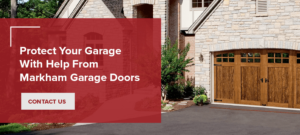
5 Garage Conversion Ideas
What’s a homeowner to do in the middle of one of the coldest winters in recent memory here in Markham? Aside from trying to keep your driveway and sidewalks free of snow and ice, you’re probably not getting into too many outdoor activities in what has been either double-digit below-freezing temperatures, or mini ice storms.
But being stuck indoors can leave you at a loss for what to do next. Here’s a suggestion, next time you’ve had enough of Netflix, reading and social media, you can start thinking of the possibilities for converting your garage into a living space.
Even if the thought hasn’t entered your mind, the idea of it is intriguing, especially when you check out some of the possibilities.
If this sounds interesting, and its hailing outside, sit back and take a look of just some of the possibilities for your garage.
Increase Your Home’s Value With These Garage Conversions
1. Instant Home Addition
Well, maybe not instant in the sense of ‘right this minute’, but certainly faster and less costly than building an extension to your home.
One of the first examples we ever saw of using an attached garage to add living space was right here in Scarborough. If you’ve never heard of the ‘Ben Jungle’, it is the neighbourhood of typical 1950s Scarborough bungalows on the north side of Lawrence Ave., between McCowan and Brimley, where all the streets have ‘Ben” in their names, including Benleigh Drive, Ben Stanton Blvd., and, maybe coolest of all, Benorama Crescent.
Unlike many houses of the era, most Ben Jungle homes were built with an attached garage, even though the homes were relatively small compared to today’s standards. To open up space in the home for a larger family, one homeowner created a formal dining room in the garage. You could also create a bedroom, family room or any other space for which you would otherwise need to build an addition.
2. Hobby Room
If you’re indeed stuck inside, it might be a great time to indulge in your hobby, like artistic painting, modeling or scrapbooking. The problem is that many hobbyists need to put everything away when not actually taking part in the hobby, and bring it all out again when they’re ready to go. If you want a dedicated space where you can indulge in your hobby any time, your garage can be it.
3. Home Gym
This one can even pay for itself over time. While many fitness buffs might have one or two pieces of equipment at home, buying a gym membership is usually needed to get all the facilities they want for a good workout. But you can save the membership fees and have the space for different machines, as well as an aerobics and stretching area, right in your garage – and you don’t have to drive to get there!
4. Brew Pub
They are trendy places to go for a night out. But, if you brew your own beer and/or make your own wine, not only does your garage offer lots of space for all that fermenting, but you can have your very own brew pub in your garage. This is one that you can take to any level you want, from a bare-bones brewery and bar, to a fully decorated and ‘lit’ nightspot.
5. Home Entertainment Centre
Home entertainment has come a long way. It used to be just a TV and a stereo. Now, to do it right, you need a multi-seat home theatre, including a couch-shaking sound system, a dedicated hi-def gaming screen, seating and two or three different brands of game consoles, a popcorn machine, fridge and (are you ready for this?) a space for a VR system.
It’s kinda fun thinking of everything you can do with your garage, isn’t it? Maybe until it comes time to actually do it! If you’d like to instantly improve the look of your garage, consider getting a new garage door! Markham Garage Doors has the only showroom in Markham, so you can browse our selection while waiting out this cold winter! Contact us today to learn more about our products and services.
Insulated Garage Doors
Garage doors don’t only provide cover to protect your vehicle and secure your assets — they have numerous other benefits, too. An insulated door is especially beneficial because of its heat retention and temperature-control properties that help you reduce electricity costs.
An unheated garage or uninsulated garage door only retains the heat lost from your home, specifically the surrounding rooms. Newer model garage doors have an airtight seal around the frame and between the panels, preventing cold air from entering your garage.
Learn more about why you should invest in garage door insulation below.
Advantages and Considerations of Garage Door Insulation
Any internal or external upgrades to improve features in and around your home have their benefits and drawbacks. There are more advantages to having your garage door insulated than not. They include:
- Improved durability: Garages are inherently tough to withstand strong winds and other forces. Insulation reinforces its strength, improving its performance in extreme weather conditions.
- Quieter operation: Added insulation promotes smoother, quieter garage door operation.
- Insulation options: Two insulation options are available to choose from. The first is polystyrene or styrofoam. This is sandwiched between the two metal door layers but offers less insulation support because it doesn’t fill the door’s entire inner layer, meaning tiny gaps may still allow air to pass through. The other is polyurethane, a more commonly used and effective material. It is a pressure-injected foam substance inserted between the garage door’s steel layers, filling it completely to close all gaps. About 90% of our Clopay insulated garage doors are installed with polyurethane foam.
Aside from the initial investment, adding insulation has no significant disadvantages. Note that insulation is less effective if the garage door is kept open extensively or opened and closed more frequently.
Money-Saving Benefits of an Insulated Garage Door
An insulated garage door is an investment that will serve you long-term. We’ve listed some benefits that will impact your pocket in different ways.
1. Lower Energy Costs
A room built above your garage adjusts to the temperature in the garage. Other adjacent rooms are also affected because you’ll use the HVAC unit to heat and cool your home. You’ll likely use more electricity in doing so. An insulated door can keep a garage warmer in winter and cooler in summer.
Let’s consider the following example. After learning that an insulated garage door would make a difference to the temperature inside his garage, a Markham homeowner installed one. He recorded some temperatures inside and outside the garage before and after the door was installed to determine the difference.
These were his findings:
- Before installation: With an outside temperature of 10 degrees, the inside temperature was 36 degrees.
- After installation: With an outside temperature of minus 5 degrees Fahrenheit, the garage temperature was 43 degrees.
This meant the insulated doors kept the garage 7 degrees warmer, even though the outside air was 15 degrees cooler. Although this is an example, it demonstrates the efficiency of insulation, especially how you’ll benefit from heat gain and loss in the cold and hot seasons.
R-Value Insulation
Insulated garage doors have varying measures to determine how well they can resist heat transfer into and out of your garage in extreme weather conditions, whether hot or cold. This measurement is called the R-value. The rule of thumb is that the higher the R-value, the better the insulation.
For example, an R-value of 0 means there’s no insulation, while a higher R-value provides a higher insulation. Most of our Clopay doors have an R-value of 12.9 or 18.4, while others have an R-value between 8 and 10. This makes our garage doors suitable to achieve your insulation goals.
2. Longer-Lasting HVAC Equipment
An insulated garage door helps control the temperature in the garage so the HVAC unit is used less frequently in surrounding rooms. You save on energy costs by keeping your home cooler in summer and warmer in winter. Your heating and air conditioning equipment will not switch on and off as often. It also won’t have to operate as long, helping extend its usage life span.
3. Reduced Strain on Your Car
While your car will start up in the colder temperatures, it endures more strain. The insulated door in the example above maintained a 48-degree difference between the outside and inside air versus a 26-degree difference for the uninsulated door. That means your car is starting in about 10 degrees colder temperatures.
An insulated garage door will help control the temperature to avoid extreme cold in the winter. This reduces the effort it takes to start and cuts down on time to warm up, extending the motor life and making your vehicle more comfortable to drive in less time.
4. Added Home Value
If you sell your home, an insulated garage door can impact your asking price. You can highlight the different benefits prospective buyers could enjoy. These include saving on energy bills, equipment storage costs and extending their car’s life. Insulated garage doors also keep the garage quieter. They look better, last longer and drown out noise pollution. New homeowners can even convert the garage for added living space like a playroom, home office or gym.
Call Markham Garage Doors for Your Insulated Garage Door Installation
Installing an insulated garage door is a necessity if you consider the advantages. Markham Garage Doors has an impressive range of suitable doors in various materials, styles and colours for all homes in the Markham area. We meet your requirements and tailor installations to your unique specifications. Trust us to get the job done right.
Request an estimate for your new insulated garage door today! You can also visit our showroom in Markham to view our selection.
Black Garage Doors That Can Modernize Your Home
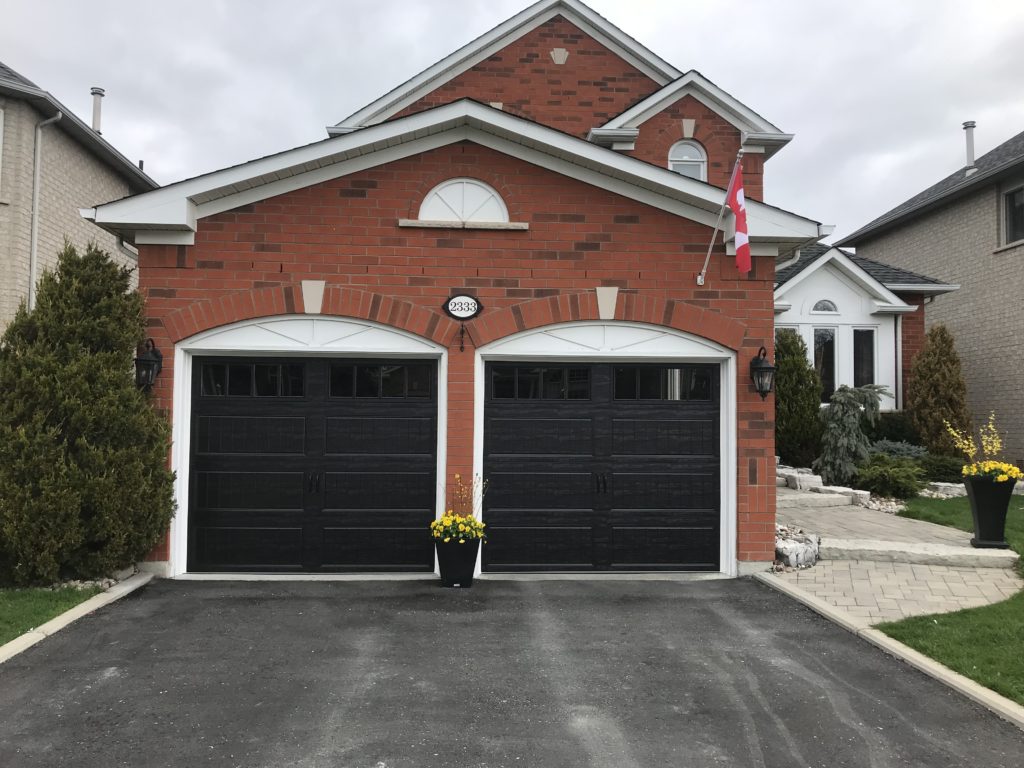
Home Benefits Of Black Garage Doors
Some advantages of installing a black garage door for your home include:
- A fresh, modern look: If you ever get tired of looking at the front of your home because it’s too plain or boring, installing a black garage door can fix your problem almost immediately. Not only does it add a little bit of contrast to your home, but it also makes the outside look newer and more modern. So, the next time you walk out into the yard, you’ll feel good about what you see.
- Increased property value: Replacing your garage door is a great way to increase your home’s value — and replacing it with a modern black door can increase it even more!
Top Black Garage Door Options We Offer
If you’re looking for an attractive, reliable black garage door to install on your property, Markham Garage Doors offers multiple styles that will improve your home’s aesthetic.
GALLERY® Collection Garage Doors
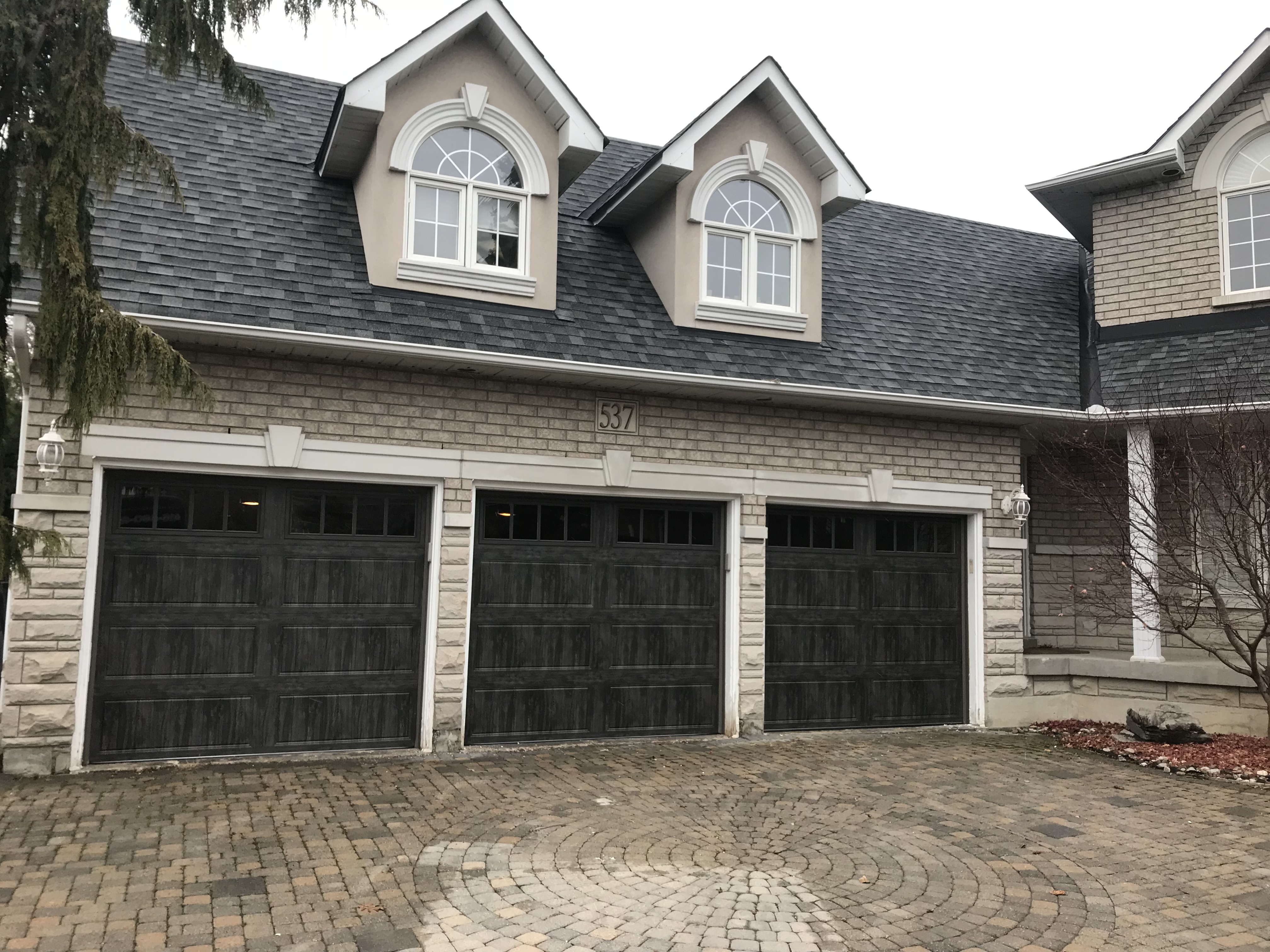
The windows come in almost two dozen different designs with multiple types of glass options. You can also choose to have your garage doors made with or without insulation depending on your individual needs. Take a look online for more decorative hardware options.
Modern Steel™ Collection Garage Doors
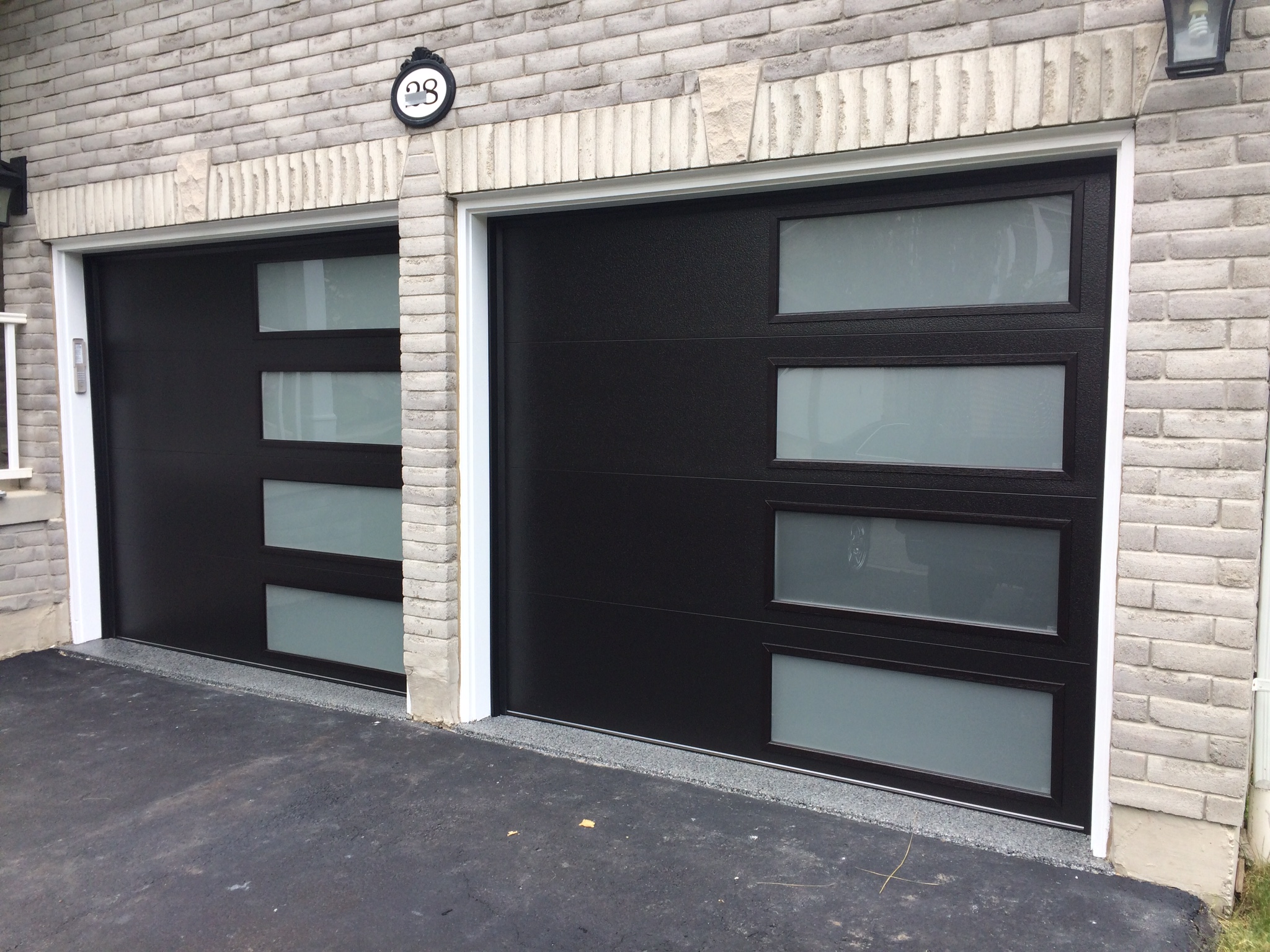
The Modern Steel™ Collection doors come with flush panels or grooved panels, as well as a multitude of window designs. For instance, one of our popular designs is flush panel with four windows down the side. This gives the door a contemporary feel that many other decorative window inserts fail to replicate.
Many customers also choose the flush panel choice over other black garage door options thanks to its strength and insulation capabilities. If you want something durable and pleasing to the eye, this is the best garage door we have for sale.
Choosing garage doors from either of these collections will allow you to strike a balance between aesthetics and practicality. Give us a call at 905-472-9178 or contact us online.
Revamp Your Home with Stylish Black Garage Doors From Markham Garage Doors
How Does a Garage Door System Work?
There are numerous garage door components that work together to create its operating system. Your garage door not only protects your vehicle, equipment and storage, it provides security from intruders. It also creates a protective seal to best eliminate elements such as wind, rain and snow from entering the garage.
The average garage door is opened 3-5 times a day, over the year that can add up. However, many homeowners only notice the system when it malfunctions. Yet, it’s beneficial for every homeowner to learn how their garage door works.
By understanding the mechanics of a garage door system, you can identify minor issues before they become significant, know when your garage door requires maintenance or repairs and understand garage door parts.
Standard Garage Door Systems
Garage doors operate via a counterbalance system. A counterbalance system uses force to offset the weight of an object (your garage door). The two main types of garage door systems are:
- Torsion spring system: A torsion spring system is the most common type of garage door system. With a torsion spring system, there are cables at the bottom corners of the door, and the torsion springs are above the door opening. When you close your door, the springs wind up and store energy. The springs release this stored energy when you open the door, which helps it lift.
- Extension spring system: Similar to a torsion spring system, an extension spring system has cables at the bottom of the door. Unlike a torsion spring system, the springs attach to these cables at the bottom of the door. When the door closes, the springs stretch and store energy, which they release to lift the door upon opening.
Anatomy of a Garage Door System
A combination of its mechanics, parts and hardware and the garage door opener machine allow your garage door to operate quietly and reliably. You can better understand how your garage door system works by learning these different parts.
Garage Door Parts & Hardware
Several pieces of hardware work together to ensure your garage door operates dependably and smoothly. These hardware pieces include:
- Door: Most garage doors are sectional overhead doors. Garage doors have four or five horizontal panels connected by hinges. They can be made from various materials, like metal, wood, fibreglass and vinyl. Countless styles are available, ranging from sleek panels to decorative glass doors with and without insulation.
- Springs: Most garage doors feature either an extension or torsion spring system. Torsion springs are most common because of their superior quality, enhanced safety and longer life span. Typically, torsion springs last up to 10-15 years, while extension springs only last up to 5-7 years.
- Cables: Your garage door’s cables are braided steel wires that work alongside the springs to lift and lower the door. The size and weight of your door determine the thickness of its cables.
- Drums: The drums are located at the top of the door on both sides. The drums are responsible for holding the cable in place as the door opens and closes. This attaches to the torsion bar and acts as a pulley to lift the door when the torsion springs wind and unwind.
- Rollers: The rollers connect your door to its tracks and allow it to open and close. Nylon rollers are quieter than steel or plastic. When you properly care for your rollers by routinely lubricating them, they will roll along the track and not slide.
- Hinges: Hinges are on the garage door panels. They allow the sections to bend and retract when opening or closing the door. Professionals recommend more oversized garage doors have double hinges to help hold the door’s weight while it’s open.
- Tracks: There are vertical and horizontal tracks that assist with your door’s movement. Steel tracks are thicker, so they can support more weight and resist bending and warping.
- Reinforced struts: Reinforced struts help support the weight of double garage doors so they can be open for an extended time.
- Weatherstripping & Bottom Rubber: Weatherstripping helps prevent exterior elements, like debris, pests and moisture, from entering. You can find it between the door sections, on the outer frame and along the bottom of your door.
- Centre support bracket: The torsion springs attach to the centre support bracket.
- Opener: Your garage door opener has a curved arm that attaches to the door. When you open or close your door, the motor in the opener allows the action by activating the spring system.
For lasting strength, dependability and performance, choose Clopay Garage Doors made of quality galvanized steel with a polyurethane foam injected insulation.
Trust Markham Garage Doors for Your Garage Door System Repair and Installation Needs
Homeowners use garage doors daily to safely and conveniently enter and exit their homes. Thus, you want to ensure your garage door system is in good condition so it functions reliably and efficiently. Markham Garage Doors is a locally owned and operated company servicing homeowners throughout Markham, Mount Albert, Newmarket, Richmond Hill, Whitchurch-Stouffville, Aurora and Scarborough. Our highly-skilled and friendly technicians will provide you with quality garage door services at an affordable price.
To learn more about our garage door repair services or quality products, contact us today by calling 905-472-9178 or completing our online contact form.
3 Garage Door Repair Myths Busted
Garage doors can be very deceptive. They can last for decades, which might make you think that you’ll never need a garage door repair. They are also very easy to operate, even when opening and closing them manually, which can lead you to believe they are always easy to handle.
Unfortunately, those deceptive characteristics of garage door have led to many myths about repairing them. Myths that, at best, can end up costing you more to repair and, at worst, cause you serious injury.
Don’t Believe These Garage Door Repair Myths
Even if you are a committed DIY repair person, and you’re handy around the house, the vast majority of garage door repairs should be handled by professionals. This is both for your personal safety and to save you money.
1. The Garage Door Isn’t Complicated, So it Should be Easy to Repair
How complicated can it be? The opener pulls it up, lowers it and that’s about all. But, for it all that to happen consistently, day after day, there is a complex system of springs, cables, rollers, bearings and hinged panels that must work in perfect balance. The result? There is probably no non-mechanized part of your home that is more complicated to repair than your garage door.
2. OK, It’s Complex, but That’s Just a Squeak
OK. Let’s say you notice the rollers are making a lot of noise along the track. So you put some oil in the roller tracks. You’ve just made the problem worse. Dirt and debris will cling to the oil in the tracks. But that’s not the worst problem. The added friction of the gummed-up tracks can cause your garage door to go out of balance. Now you have a real problem. A costly one. So even repairing a garage door squeak isn’t necessarily easy.
3. One of the Springs Broke, So I Only Need to Replace One Spring
First, replacing a door spring can be very dangerous and should only be done by a professional. But when a garage door repair person tells you to replace both springs, take their advice. The springs help keep your door balanced. As they age, they can stretch and weaken. If you replace only one spring, the new one will be stronger. The difference between the performance of the new spring versus the old spring can put your door out of balance.
Yes, there are some garage door repairs that you can do yourself. The hinges between the panels are lubricated in much the same way as any door hinge. If you’re not sure about repairing your garage door, call us at 905-472-9178 or fill out our online contact form, and we’ll be happy to answer your questions.
How to Winterize Your Garage Door
You change the filter on the furnace. You top-up the antifreeze in your car. You buy road salt for the driveway. You do them all because you want to minimize the chances of an accident or inconvenience in the middle of winter.
So why don’t you winterize your garage door? It might not be a disaster, but the moment your garage door decides to not work will probably be the coldest, stormiest and darkest moment of the winter.
It might be a ways off, but now’s the best time to get your garage door ready for winter.
4 Steps to Winterize Your Garage Door
This is mainly just good-sense, regular maintenance to keep your garage door in good working condition.
1. Look and Listen
To the garage door opener that is. If it conks out, the door won’t open. When the door is in operation, listen for unusual sounds of grinding in the motor and squealing from the metal parts of the door.
Also look at the door as it raises and lowers. Make sure the bottom of the door stays parallel to the floor and that the door doesn’t ‘lurch’ as it travels.
2. Check That the Safety Features are Working
Sticking with the opener, it’s important the door’s two main safety features are working properly.
For the first safety feature, put a 2X4 on the garage floor across the line where the door touches the floor. Trigger the door to close. It should automatically stop and go backwards when it hits the 2×4.
You can test the second safety feature with a stick and empty cardboard box. Use the stick to push the box into the path of the door as it closes. Stay well away from the door’s path. The door should stop and reverse as the box goes between the two photo eyes on either side of the door opening.
3. Fasten Connections Where Needed
There are metal hinges between each garage door panel. The tracks along which the rollers run are connected to the ceiling of the garage. And so too is the garage door opener. Check all their fasteners and connections for tightness.
4. Add Lubrication
Lubricate the rubber seals between the door panels, along the bottom of the door and around the door frame. Lubricate moving metal parts including the door hinges, cables, springs, and rollers.
There’s no guaranteeing that you’ll survive the winter without a garage door issue. But there are lots you can do to minimize it. And if you run into problems, contact Markham Garage Door. We’re happy to help in any way we can.
The Benefits of Having Garage Door Windows
After style, color, size and construction materials, wondering whether you should get windows in your garage door can seem like just another item on a long list. If you already have a windowless garage door, you may have wondered what it would be like to make the switch.
To help you make a decision, we thought we’d put together a list of benefits of having garage door windows. We think you’ll find at least a couple of points that you may not have considered.
Garage Door Window Benefits
1. Let the Sunshine In
The first and perhaps most obvious benefits of windows in the garage door are that it will make your garage brighter during the day. Not only is a brighter garage easier to work in, but it can have other benefits too. Homeowners tend to keep well-lit places tidier. So having windows in your garage can help you keep it more organized.
2. Improve Your Home’s Curb Appeal
Your garage door is the largest single visual element of your home when viewed from the street. In other words, it has a major effect on your home’s curb appeal. But that effect goes beyond the fact that windows are more aesthetically pleasing than a solid, windowless door. You can choose windows for your garage door that match the windows elsewhere in your home, like those in your front door. So, not only do windows look better, but the right windows can unify the entire look of your home’s exterior.
3. Can Help You Use the Garage for Other Purposes
Want to build a pro workshop in the garage? Or how about your very own home gym? Arts & crafts room for the kids? Man cave? In any case, the windows in your garage door are often the only windows into the garage. Even while you only get daylight for part of the day, it’s always nice to have it when your garage isn’t just a garage.
You can retrofit an existing garage door with window panels or choose from a wide variety of new doors with windows or even doors made entirely of tempered glass and aluminum frames. Call Markham Garage Doors at 905-472-9178 to learn more.
Want a More Comfortable Home? Install an Insulated Garage Door
When you think of ‘home comfort’, insulation is usually part of your thinking. A well-insulated home, including attic and wall insulation, and thermal windows, stays warmer in winter and cooler in summer. But, unless you have an uninsulated garage door, your home might not be as comfortable as possible.
Even in well-insulated homes, an attached garage can be like a ‘hole’ in that insulation.
When you insulate your home, you usually insulate the attic and outside walls. You don’t insulate the walls and floors inside the home. Why would you? Inside walls and floors don’t let in any heat or cold from the outside, so it would be a waste of time and money to insulate them. (You might use sound insulation in inside walls.)
An attached garage can be like a hole in your insulation (a very large one!) because of how we think about the garage. Considering that there’s a door from the house to the garage, just like any other ‘room’ in the house, the garage can feel like a part of the house.
But, in the majority cases, homeowners don’t insulate the walls of the garage, whether they are outside walls, or shared with other rooms in the house. They also generally don’t insulate the ceiling of the garage, even when it is shared with a room above the garage.
Cold and heat can get into the garage through the outside walls and uninsulated garage doors much easier than most people think. With no insulation on the walls and floors that are shared between your house and garage, that heat and cold can get into your home fairly easily too.
An Insulated Garage Door to the Rescue
An insulated garage door will help reduce the amount of heat and cold that gets into your garage. That will make your home more comfortable, and it will reduce your utility bills.
If you would like to learn more about insulated garage doors, please contact us at Markham Garage Doors.
3 Features of The Future of The Garage
Garages have remained much the same since they started housing horseless carriages in the early twentieth century. Even seemingly ‘modern’ advancements, like garage door openers, have been around for a long time.
And if you look at some of the ‘new’ designs for garage doors, you’ll spot many carriage doors styles that even pre-date car garages.
So with garages changing very little over the past century, you might think that they won’t change very much in the next century.
But that thinking could very well be wrong.
In fact, it might be safer to bet that garages will change more in the foreseeable future than they did in the past 100 years. Here are just a few ways your garage will be different in the not-so-distant (happening right now!) future of the garage.
1. They’ll be Equipped to Refuel Your Car
No, you don’t need to get safety certified to build a gasoline pump. But as electric vehicles continue their slow but steady foray into the world of fossil-fuel burning cars, there’s a good chance you might be retrofitting your garage to recharge electric cars.
2. It’ll be Online
The future is now for this one. LiftMaster’s MyQ™ technology has been offered on the many of their garage door openers for at least five years now. You can now even connect an older door with their retrofit package. It means that the status and control of your garage door, garage door opener, garage lights and security cameras in the garage are in the palm of your hand.
3. It Might be Your New Home Expansion
If self-driving automotive technology continues to evolve, there may be no need for personal vehicles. You’ll simply ‘whistle’ and one will find its way to you. That leaves one of the largest, continuous open spaces in your home empty. And ready to become anything you want to make of it. Think of the size of the TV you can get in through the garage door!
It’s a good thing that, until the future arrives, you can rely on Markham Garage Doors for quality maintenance and repairs to your garage doors. Contact us today to learn more.

